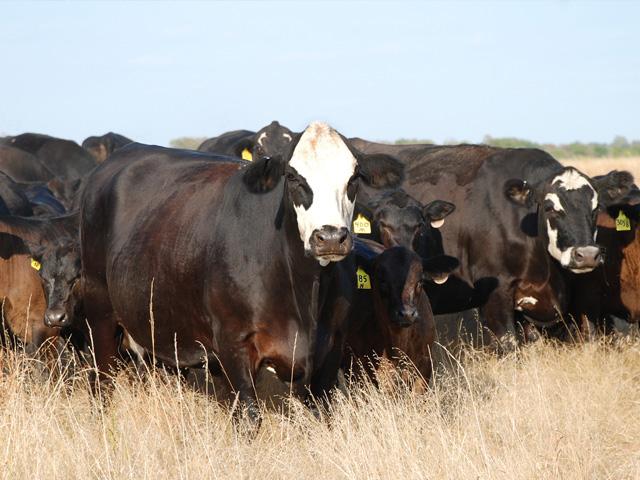The Most Important Number
Improve Preg Rates with a Step-by-Step Analysis
If a cattle producer only looked at one number in assessing the cow herd every year, Gerald Stokka knows which one he'd pick—preg rates.
Stokka is Extension veterinarian at North Dakota State University, and livestock stewardship specialist. He notes that selling more calves, as it relates to cows exposed and cow input costs, is a greater indication of business success than any other production parameter.
"Unfortunately, the major of our expected progeny differences [EPDs] measure production traits not related to reproduction, while the index values focus on gross revenue, not input costs," he says.
The veterinarian uses as an example a 300-head cow herd with a 15% open rate. Assume the normal average open rate is 5%. This herd, then has an open rate 10% above normal, and that means 270 of the cows assume the cost of maintaining all 300. Stokka estimates a cow averages $700 a year to maintain, so in this scenario those 270 cows must each pick up their own $700 tab, plus an additional $78 for the 30 cows that aren't reproducing.
P[L1] D[0x0] M[300x250] OOP[F] ADUNIT[] T[]
Stokka notes there are several fundamental reasons for low pregnancy rates in a cow herd, and it may take time and analysis to find out what needs to change.
"Meaningful discussion to find solutions requires a systematic approach to practical management decisions," he says. Veterinarians need access to production information related to a wide range of issues and management to help improve pregnancy rates. Stokka notes the following information will help get the conversation started, and allow the herd veterinarian to make recommendations that should bring up pregnancy rates.
1. Is there a defined calving season? When? The time of year cows calve changes energy levels required. Late winter/early spring calvers, for example, require more energy to prepare to rebreed. Late spring/summer calvers may experience decreasing forage quality mid- to late-summer which can impact fertility.
2. When are the majority of calves born, looking at distribution through the defined calving season? This information can provide evidence of inadequate bull power, sometimes related to dominant bulls, lame or injured bulls. It may also indicate inadequate cow nutrition and low BCS during breeding. A large number of cows pregnant later in the breeding season may point to reproductive diseases such as vibrio or trichomoniasis.
3. How many pregnant cows ultimately calve? That number may point to fetal loss due to abortions or stillbirths. This can be evidence of fetal infections such as BVDV, IBR, leptospirosis, Neospora, fungal infections or other pathogens. Fetal losses can even be due to high nitrate levels in forages.
4. What is the BCS of each cow, by age? Younger cows (2 and 3 years) and older cows (over 12 years) tend to have a lower BCS than middle-aged cows. BCS has a direct relationship to ability to rebreed and conceive. In younger cows still growing and lactating, there is a drain on energy reserves; older cows may have missing incisor teeth that make it difficult for them to eat.
5. What are cow and bull ages, and how many are in each pasture? Herds with younger or older cows in common pastures, regardless of bull numbers, tend to have more open cows. Bull age is also key. Older, more dominant bulls tend to serve the majority of the cows. Running two, 14- to 16-month-old bulls with a single, dominant older bull may technically count as three bulls, but in reality this may be more like 1.5 bulls. Be sure all bulls have a semen evaluation prior to each breeding season, and if low preg rates appear isolated to one pasture, test that bull again.
6. Are you emphasizing biosecurity and vaccinations? All additions to the herd should have testing and a vaccination history. If they don't, quarantine them. Even with testing and vaccination don't introduce newcomers to the herd just prior to calving season.
(c) Copyright 2020 DTN, LLC. All rights reserved.






